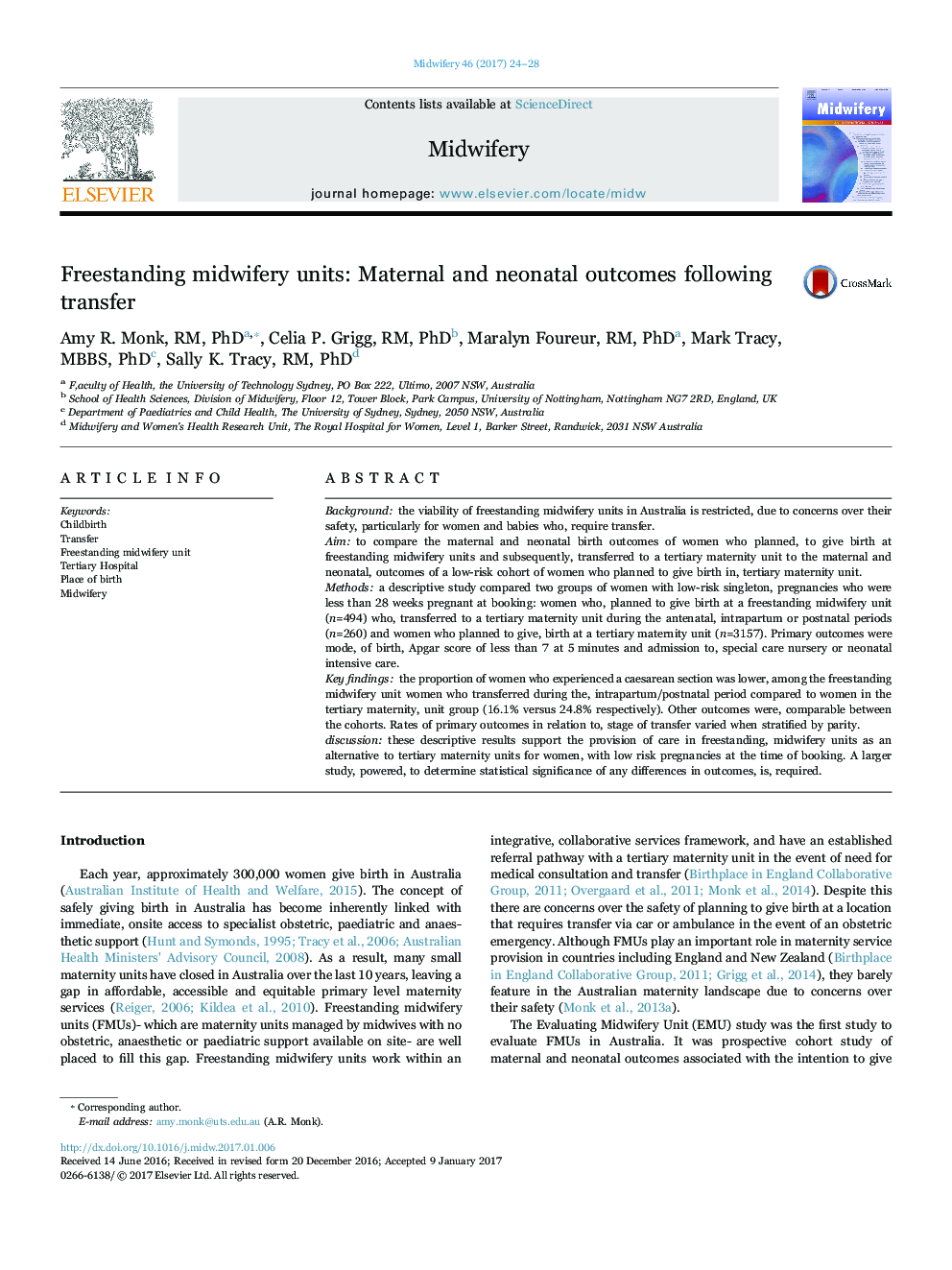| Article ID | Journal | Published Year | Pages | File Type |
|---|---|---|---|---|
| 5122202 | Midwifery | 2017 | 5 Pages |
Backgroundthe viability of freestanding midwifery units in Australia is restricted, due to concerns over their safety, particularly for women and babies who, require transfer.Aimto compare the maternal and neonatal birth outcomes of women who planned, to give birth at freestanding midwifery units and subsequently, transferred to a tertiary maternity unit to the maternal and neonatal, outcomes of a low-risk cohort of women who planned to give birth in, tertiary maternity unit.Methodsa descriptive study compared two groups of women with low-risk singleton, pregnancies who were less than 28 weeks pregnant at booking: women who, planned to give birth at a freestanding midwifery unit (n=494) who, transferred to a tertiary maternity unit during the antenatal, intrapartum or postnatal periods (n=260) and women who planned to give, birth at a tertiary maternity unit (n=3157). Primary outcomes were mode, of birth, Apgar score of less than 7 at 5Â minutes and admission to, special care nursery or neonatal intensive care.Key findingsthe proportion of women who experienced a caesarean section was lower, among the freestanding midwifery unit women who transferred during the, intrapartum/postnatal period compared to women in the tertiary maternity, unit group (16.1% versus 24.8% respectively). Other outcomes were, comparable between the cohorts. Rates of primary outcomes in relation to, stage of transfer varied when stratified by parity.discussionthese descriptive results support the provision of care in freestanding, midwifery units as an alternative to tertiary maternity units for women, with low risk pregnancies at the time of booking. A larger study, powered, to determine statistical significance of any differences in outcomes, is, required.
